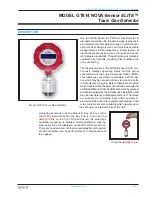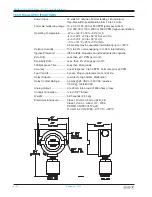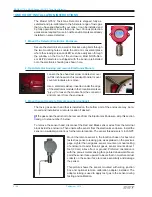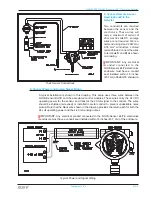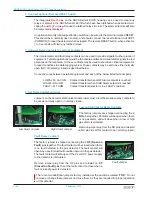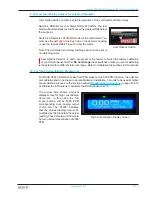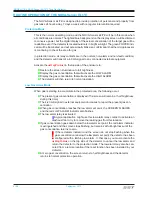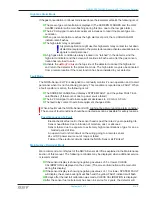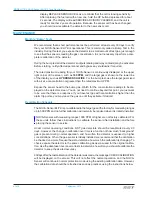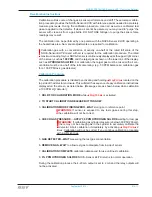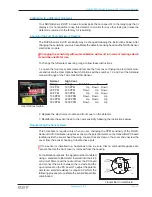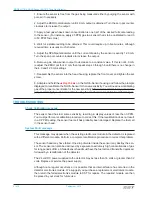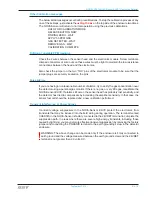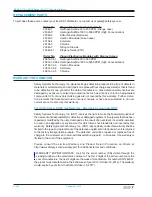
September, 2015
814-3
MODEL GT814 NOVA-Sensor
ELITE™
Toxic Gas Detector
SELECTING A LOCATION FOR THE GAS DETECTOR
To insure the fastest possible detection of leaking gases, the location of the sensor is important.
Lighter than air gases tend to accumulate at the highest point in an enclosed space, whereas
heavier than air gases will accumulate at the lowest point in the room. For sensors located out
of doors or in very large enclosed spaces, try to locate a sensor near any expected source
of leaks (such as pumps, valves or pipe fittings), taking the gas weight into consideration.
Also consider the effect of wind or forced air cooling at the sensor location. The gas sensor
will never respond if air currents blow the gas away from the sensor.
Preferred orientation of the sensor is with the porous face of the sensor pointing down, as
shown in the pictures. If necessary, it may be installed at an angle or horizontally. The sensor
must never be installed pointing upwards.
Lighter than air toxic gases (sensor mounted above leak point)
For lighter than air gasses, the sensor should be located above the spot where a leak is likely
or at the highest point within an enclosure.
Symbol
Toxic Gas
Density
TWA STEL
NH
3
Ammonia
0.6
25
35
HF
Hydrogen Fluoride
0.9
3
Gases with weights near that of air (Density of air = 1.00)
These gases mix readily with air, so sensor location is not as critical, but sensor should still
be near the expected leak point for fastest response.
Symbol
Toxic Gas
Density
TWA STEL
CO
Carbon Monoxide
1.0
25
NO
Nitric Oxide
1.04
25
Heaver than air toxic gases (sensor mounted below leak point)
For heavier than air gasses, locate the sensor below the expected leak. However, do not
locate the sensors closer than 1 foot to a floor to prevent damage from water, dust, etc.
Symbol
Toxic Gas
Density
TWA STEL
H
2
S
Hydrogen Sulfide
1.2
10
15
C
2
H
4
O
Ethylene Oxide (ETO) 1.5
1
NO
2
Nitrogen Dioxide
1.6
3
5
SO
2
Sulfur Dioxide
2.25
2
5
CL
2
Chlorine
2.5
!
NOTE: Data in above tables is from reliable sources that are believed to be accurate, but
is not guaranteed by Safety Systems Technology.
TWA
is the
Time Weighted Average
gas
concentration in PPM to which personnel may be repeatedly exposed without adverse ef-
fects.
STEL
is the
Short Time Exposure Limit
gas concentration to which personnel can be
exposed for a short time without suffering irritation, irreversible tissue damage, unconscious-
ness or paralysis.
Summary of Contents for GT814
Page 2: ...Blank Page ...





